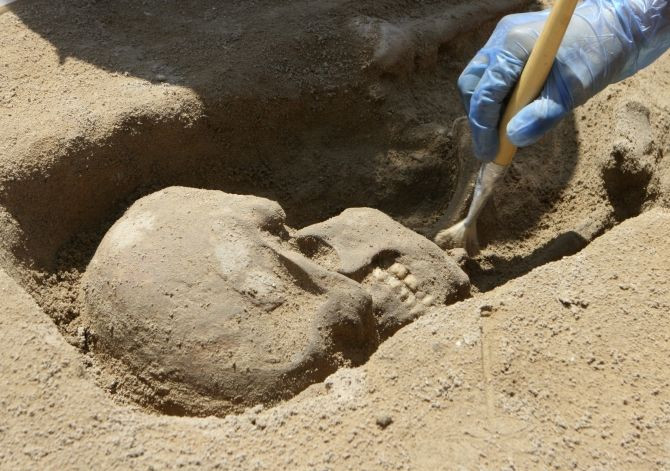Oldest DNA Recovered from 7,000-Year Old Skeletons in Spain

Researchers published a paper in the current issue of Current Biology detailing their analysis of DNA from 7,000-year old cavemen in northern Spain.
The bones of the two young adult males were found in a cave in the Cantabarian mountain range in 2006 by a handful of explorers, 4,920 feet above sea level. The cold atmosphere is what preserved the DNA in the remains of the two bodies. The cavemen lived during the Mesolithic period and were hunter-gatherers, as determined by an ornament one of the skeletons was holding. They have named the two skeletons Braña1 and Braña2 after the Braña-Arintero site in which they were discovered. They were in near-perfect condition.
Prior to the discovery, the oldest DNA belonged to Otzi the Iceman. His DNA was 5,300 years old and was found in the Alps mountain range in 1991.
Scientists recovered 1.34 percent and 0.53 percent of the genomes from the cavemen through a technique called shotgun sequencing.
Some speculated that contemporary Basque populations could be related to the cavemen. But in fact the scientists say that they are wholly genetically unrelated. They are also unrelated to other populations in the Iberian Peninsula, which includes Spain, Portugal, and Andorra. Their links are actually more closely related to modern-day populations in northern Europe rather than their geographical brethren.
In addition, they also recovered the complete mitochondrial DNA of one of the cavemen. Since mitochondrial DNA is inherited directly from a person’s mother, it is extremely useful in determining a person’s origins.
They also found that European populations in what is now England, Germany, Lithuania, and Spain also shared a common ancestor, despite the distance.
The next goal for the researchers is to obtain mitochondrial DNA for the other skeleton.
The authors of the study are a diverse cross-national bunch, hailing from universities in Spain, Denmark, and Mexico.
Published by Medicaldaily.com



























